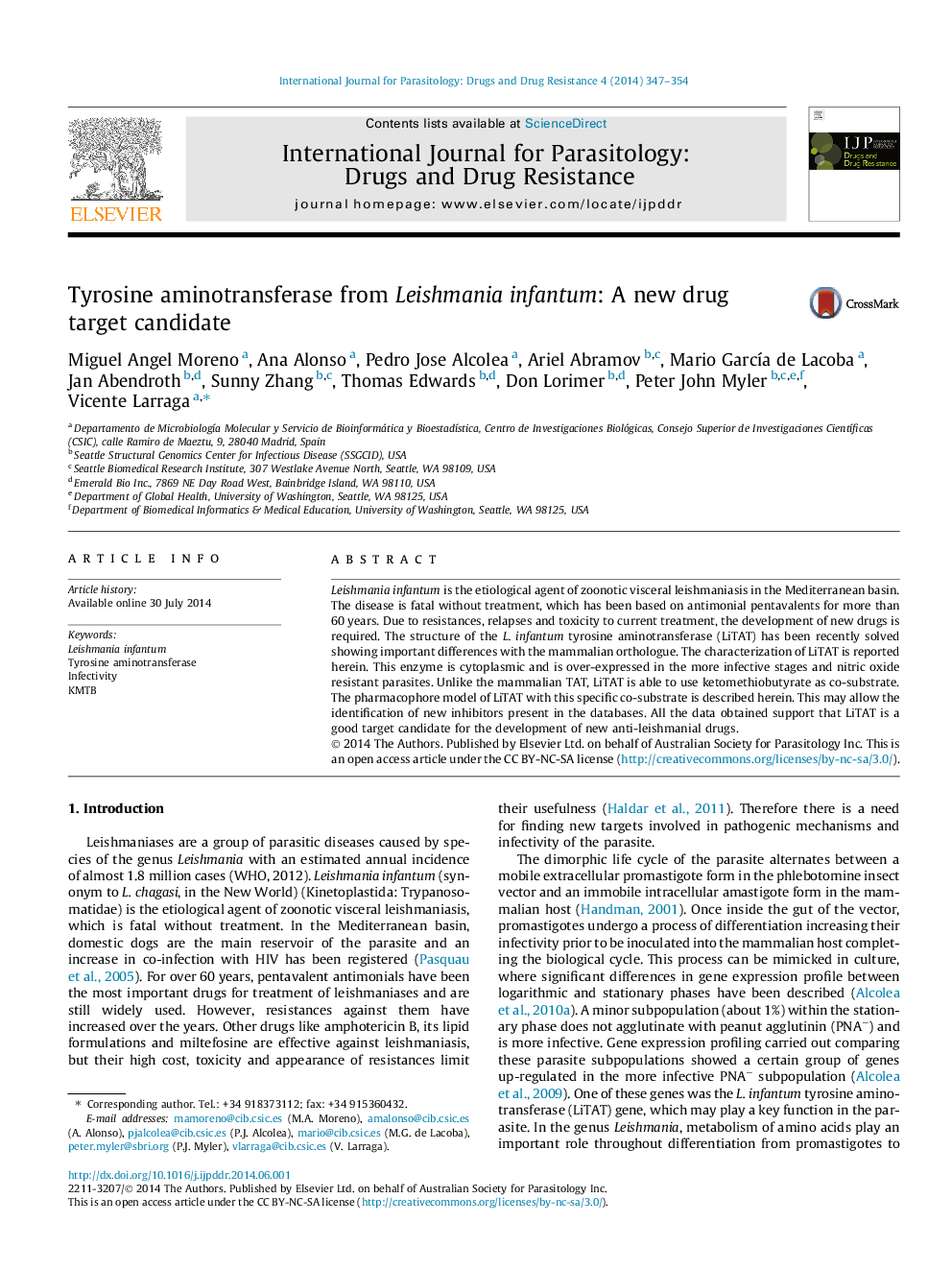| Article ID | Journal | Published Year | Pages | File Type |
|---|---|---|---|---|
| 2054656 | International Journal for Parasitology: Drugs and Drug Resistance | 2014 | 8 Pages |
•The tyrosine aminotransferase from Leishmania infantum has a cytoplasmic distribution and is able to use the oxoacid ketomethiobutyrate, as a co-substrate.•L. infantum tyrosine aminotransferase is over-expressed in infective and nitric oxide resistant parasites.•The structural differences with the mammalian TAT, together with cellular distribution, expression pattern and activity, support that LiTAT is a drug target candidate.•The structure-based model of the pharmacophore of LiTAT with specific substrate ketomethiobutyrate has been generated.
Leishmania infantum is the etiological agent of zoonotic visceral leishmaniasis in the Mediterranean basin. The disease is fatal without treatment, which has been based on antimonial pentavalents for more than 60 years. Due to resistances, relapses and toxicity to current treatment, the development of new drugs is required. The structure of the L. infantum tyrosine aminotransferase (LiTAT) has been recently solved showing important differences with the mammalian orthologue. The characterization of LiTAT is reported herein. This enzyme is cytoplasmic and is over-expressed in the more infective stages and nitric oxide resistant parasites. Unlike the mammalian TAT, LiTAT is able to use ketomethiobutyrate as co-substrate. The pharmacophore model of LiTAT with this specific co-substrate is described herein. This may allow the identification of new inhibitors present in the databases. All the data obtained support that LiTAT is a good target candidate for the development of new anti-leishmanial drugs.
Graphical abstractFigure optionsDownload full-size imageDownload as PowerPoint slide
